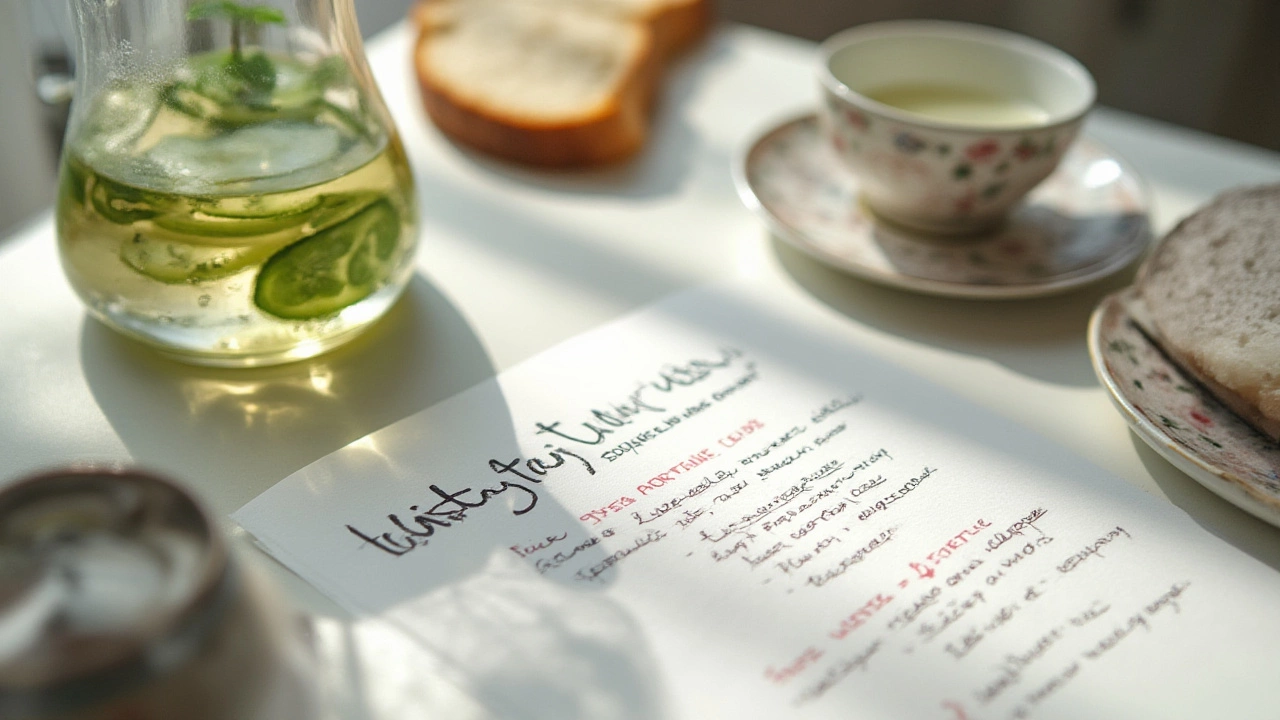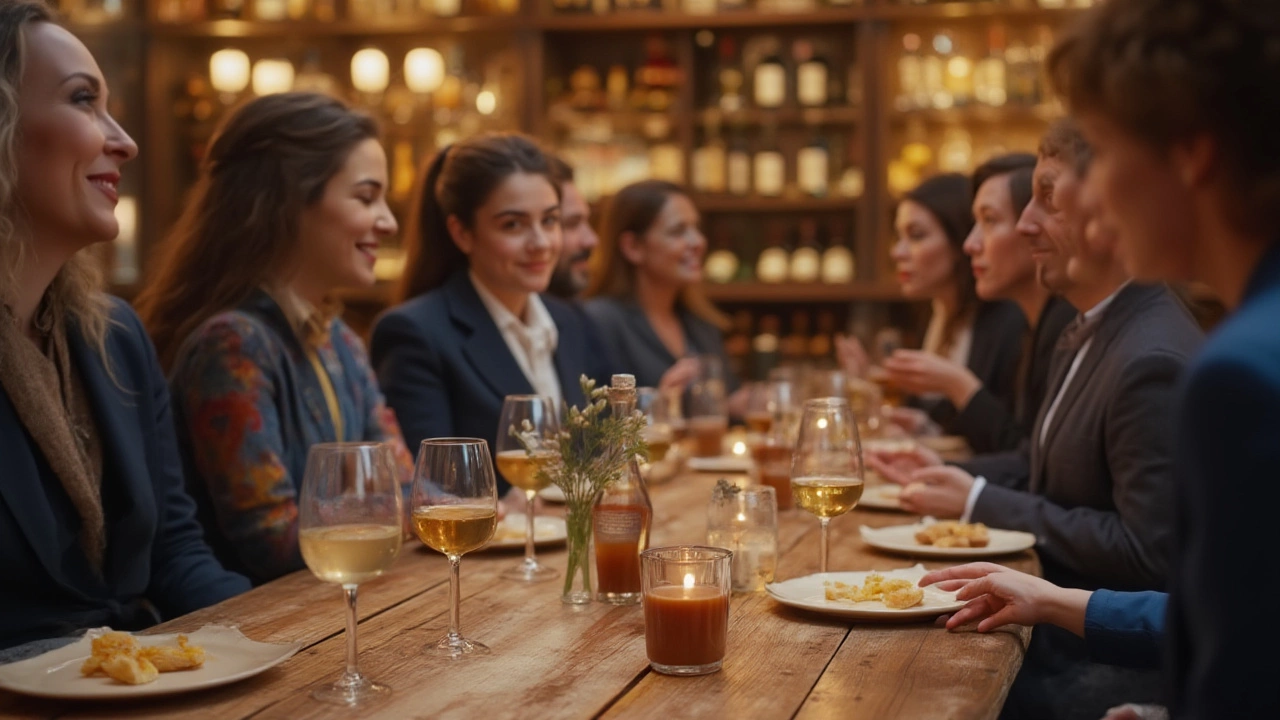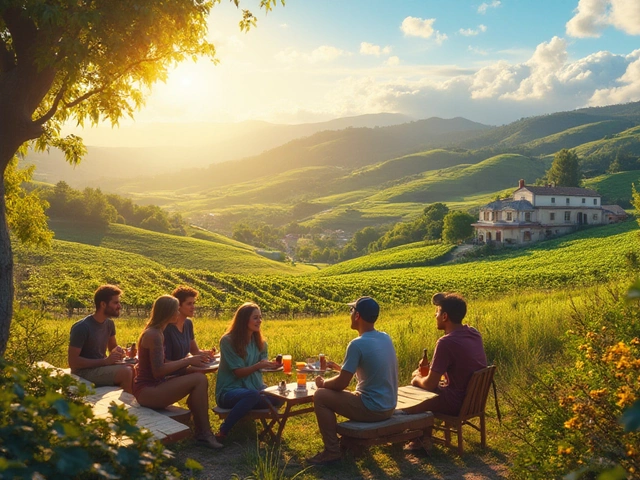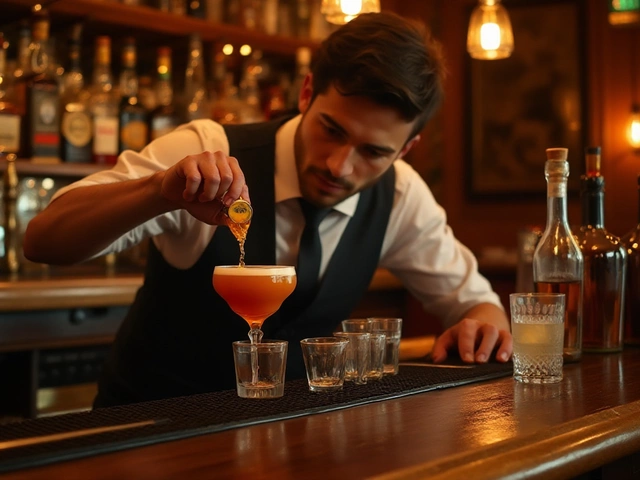Imagine this: you've been looking forward to a wine tasting for weeks. The table is set, glasses glinting, and the possibilities are endless. But there’s a catch—what you drink before the first sip can make or break your entire experience. It sounds dramatic, but science backs it up. A badly chosen pre-game drink can dull your senses, throw your taste buds off, or leave annoying aftertastes. Most people underestimate just how much their opening drink matters, yet this one detail completely sets the stage. Forgetting or getting it wrong can turn great wine into "blah." Let’s take a deep dive into why your pre-tasting drink is more important than most assume, and how to make the smartest choice.
Why Your First Drink Matters: The Science Behind Taste
Wine tasting is all about the details—one whiff, one sip, one note can change your entire impression of a bottle. Our taste buds, though, aren't fixed objects. They’re easily swayed by what touched them just moments before. Drink coffee? You’ll almost always have a bitter film on your tongue. Juice or soda? The sugar lingers, fighting with the natural acidity of wine. Even water isn’t always the safe bet. Here in Australia, tap water is chlorinated, and that can mess with subtle flavors in wine. Fluoride leaves a faint aftertaste, too. Researchers at UC Davis found even the tiniest trace of residual flavors can distort how fruit, minerality, and age in wine are perceived—so you’re not just being fussy if you care about your palate’s state.
So, what happens on a chemical level? Taste buds can be overwhelmed or numbed by flavors like sugar, salt, and fat. It takes up to twenty minutes for your palate to "reset" after a strong-tasting drink. And once you start adding acid, dairy, or dense, aromatic substances into the mix, the palate needs even longer to clean up and recalibrate. If you’ve ever had an orange juice before brushing your teeth, you know what I mean: flavors just don’t land the same when your palate is compromised. This is exactly why a wrong drink can ruin your first glass of Semillon, Shiraz, or Pinot Noir.
Best Drinks to Choose Before a Wine Tasting
If you really want your first sip of wine to taste exactly the way the winemaker intended, you need a drink that’s nearly flavorless and doesn’t leave a residue. The gold standard by most sommeliers? Filtered, still water at room temperature. It hydrates you and washes out most mouth residue, giving you a blank canvas. Avoid ice-cold water—very cold temperatures can actually dull your senses temporarily, so what looks neutral at first is hardly ideal.
If water bores you, you have a few options, though you’ll need to be picky. Some tasters recommend a high-quality, unsalted, slightly sparkling mineral water. Think San Pellegrino or Antipodes. These bubbles help "scrub" away tiny food particles and stimulate your palate, but as long as there’s no salt or artificial flavors added. Stick to spring or mineral waters with low total dissolved solids (TDS) under 250 mg/L; that way, you won’t get mineraly aftertastes that can battle with delicate wine notes.
You might see people sip on weak green tea—no sugar, no lemon, no “fun.” This can be good for cutting a slimy feeling on your tongue, but only if the tea is very weak. Anything strong, especially black tea or herbal blends, will leave a warmth or aromatic signature you don’t want. Never go near juices, sodas, energy drinks, or dairy. All of these leave films, wild acids, or sugar rushes that will take ages to get rid of. And yeah, definitely skip mouthwash and gum right before; mint overwhelms almost everything and destroys nuance. If you’ve had gum or strong mouthwash, you’ll need to rinse for several minutes—sometimes even wait for half an hour.

What to Avoid: Common Mistakes Before Tasting
It’s easy to make mistakes, so let’s get into the “don’ts.” You’ll be surprised at how often casual drinkers get tripped up here. Coffee is the main culprit—yes, even your morning long black. The oils and strong bitter acids hang around for ages, ruining the fresh start you need. If you’re a regular at a Sydney wine bar, you’ll see the professionals never touch a flat white until after the last tasting pour.
Juices like orange or pineapple are disastrous. They are full of citric acids and sugars which override actual tartness and sweetness in wine. Soda is no better, especially anything with artificial sweeteners—those have aftertastes that can linger for an hour. Dairy creates a tenacious film on your tongue; that’s one reason somms recommend waiting after you eat cheese before you start tasting actual wines. And for the love of wine, no mouthwash. Mint or menthol is kryptonite for wine flavors. If you’re worried about fresh breath, use a non-flavored breath spray and then rinse with water.
Bottled water can actually be a risk depending on the brand; those with very high minerality (Evian famously tastes "chalky") or with added sodium spoil the game. If you’re at a tasting event, check for the source. The simple table below shows the most common mistakes and better alternatives:
| Don’t Drink | Why Not? | Better Alternative |
|---|---|---|
| Coffee/Espresso | Bitter oils, lingering aftertaste | Filtered water, room temp |
| Orange/Pineapple Juice | Strong acid, heavy sugar | Low-TDS mineral water |
| Soda/Soft drinks | Sugar, artificial sweeteners | Plain sparkling water (unsalted) |
| Mouthwash or Strong Mint Gum | Overpowering menthol | Water rinse, non-flavored breath spray |
| Dairy drinks | Residual fat coating | Filtered water |
Pro Tips for a Clean Palate
So you know filtered water or mild mineral water is best, but you want to level up. Here are some sneaky tricks wine professionals swear by. First, bring your own water bottle you know is neutral—some wineshop tap water can be shockingly chlorine-heavy here in Sydney suburbs. Before you show up, rinse your mouth a few times with your planned pre-tasting water. If you’ve eaten recently, chew a small piece of stale baguette or a plain cracker and rinse again—these "dry" foods help catch odd flavors on your tongue. Just don’t choose salted or buttered crackers, as salt and fat linger.
Another secret weapon: apple slices. Slices of mild, crisp apple work as palate cleansers and can gently take away odd aftertastes without introducing their own. Professionals use granny smiths or other green apples, and always follow with a water rinse. Don’t overdo it though—a bite or two is plenty.
If you know you’ve had especially strong flavors (say, lots of garlic at lunch or a late cappuccino), try rinsing with warm water first. Warm water dissolves fats and oils faster than cold. Then use your mineral or filtered water at room temp to normalize your mouth. No one expects you to be sterile, but you do want as blank a canvas as you can manage.
Some places in Europe still serve water with a twist of lemon before wine tastings. Don’t follow this tradition! Lemon juice is powerful: the citric acid can alter your taste buds for half an hour. Stick with clean water, always. And if you’re at a formal tasting, avoid sneaking in with anything but water—good hosts notice, and some will have you wait until your palate is clean. They're not being snobs, just protecting their wine.

What the Pros Do: Methods from Sommeliers and Wineries
So how do sommeliers and winemakers handle all this? There’s a ritual. Pros often drink nothing but water for at least an hour before any official tasting, especially when judging a competition. If it’s an outdoor tasting (and face it, who doesn’t love an Aussie vineyard in the sun?) they’ll check the water’s mineral content or bring their own. At a Hunter Valley tasting panel last year, several judges used only low-mineral purified bottled water between every pour, and chewed unsalted baguettes—or, if they got desperate, a very bland cracker.
In high-end cellars, the staff usually provide a selection of water. They’ll avoid any waters over 250 mg/L TDS, and steer clear of brands known for strong "personalities." Winemakers say "your wine should speak, not the water." In blind tastings, some will even splurge for imported Japanese spring waters like Suntory, famous for being flavorless. It feels a bit eccentric, but after a few tastings, the difference is obvious.
Here’s a classic sommelier checklist before leading a wine tasting:
- Have no coffee, tea, or juice within two hours before tastings
- Rinse mouth thoroughly with filtered, room temp water before and between wines
- If mouth feels "woolly," chew dry plain bread or apple, rinse again
- Skip all dairy and strongly flavored foods beforehand
- Use clean, unscented glassware free from dishwasher soap smell
The big lesson: the less taste your prep drink has, the better the wine will show. If you want notes of raspberry, pepper, or honeysuckle to pop out of your glass, you’ve got to make sure nothing in your mouth is fighting them. It may seem like overkill, but even minor slip-ups dull the magic.


